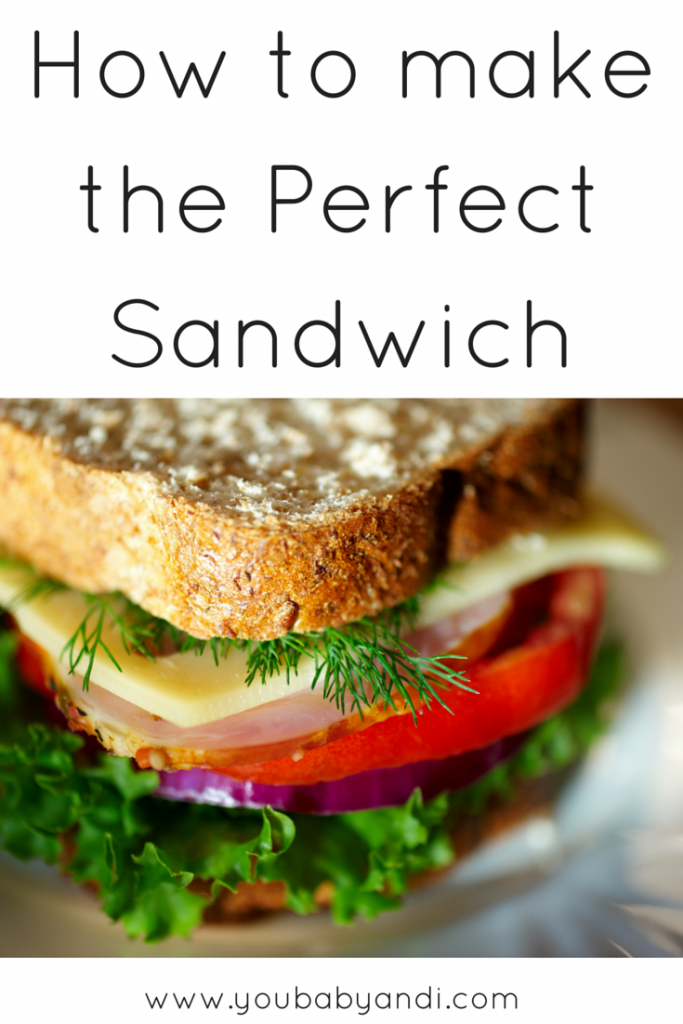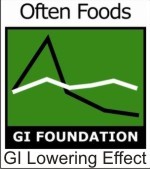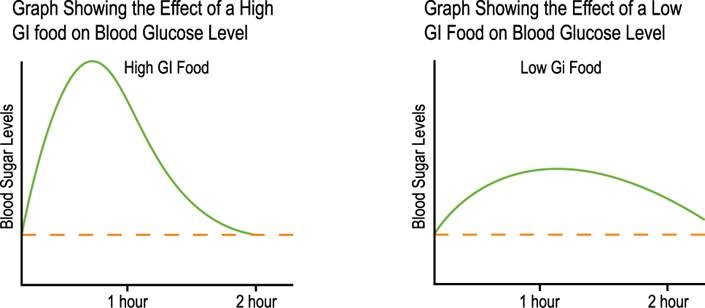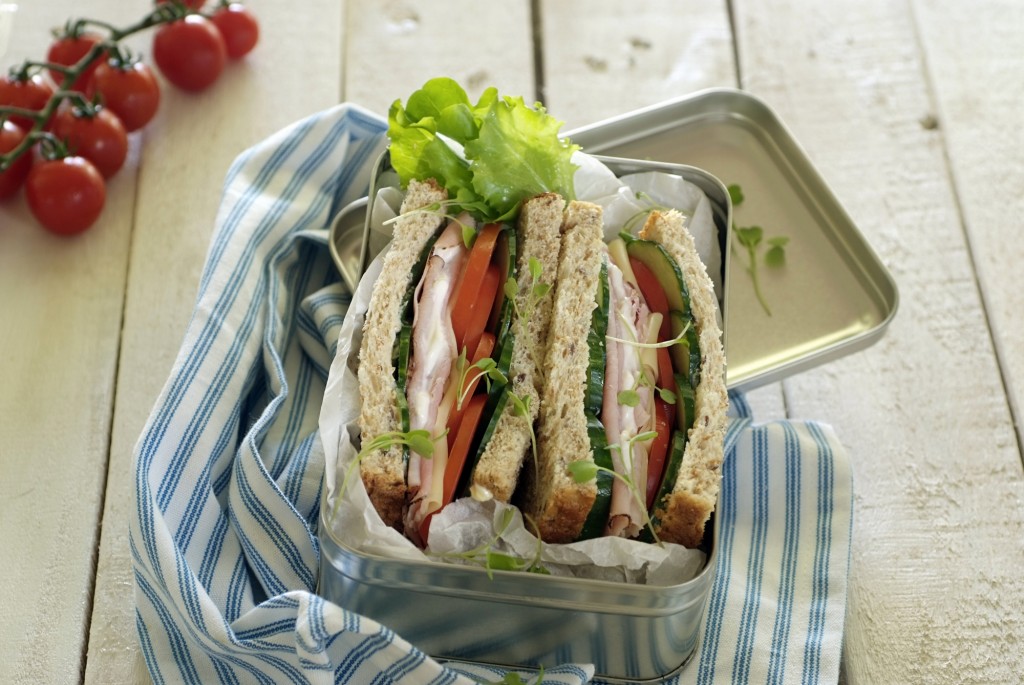There’s nothing quite like tucking into a wholesome sandwich. Sweet or savoury there is so much potential between two soft slices of fresh bread.
Sandwiches are as fantastic as they are convenient, easy to handle, extremely versatile and can be as affordable or extravagant as the pocket allows.
I love my bread especially a good sandwich when I’m on the go however, my husband is the opposite. He hates bread but his opinion changed a little when Head Dietician from Future life – Lara visited us recently at home.
Futurelife’s Head Dietician Lara de Santana shares her top tips on how to create the perfect sandwich:
 1. Low GI bread
1. Low GI bread
Choose breads that are low GI (Glycaemic Index). This means that the carbohydrates are broken down slower leading to a steady, gradual increase in blood sugar levels which our body responds well to, compared to a quick spike as shown in the graph below2,3. Futurelife Smart bread is a great option here, as not only are both the White and Brown variants low GI but the Futurelife Smart White Bread is high in Omega-3 fatty acids (healthy fat which is very good for your heart and brain) and is a source of fibre, while the Futurelife Smart Brown Bread is higher in fibre and a source of omega-3’s.
Low GI foods are generally more of your browner, whole-wheat options that are higher in fibre. For example Futurelife Smart Brown Bread, brown rice etc3; however in this case Futurelife Smart White Bread boasting a low GI is an exception to this due to its unique recipe.
Look out for these logos when shopping:


2. Lean protein
One can even reduce the GI of a sandwich by including a protein into the filling. Besides improving how your body will break down and use it, protein has been proven to increase the feeling of fullness3,4. Leaner proteins are preferred to reduce the saturated fat intake which may have a negative effect on your heart and circulation4,5. Add some thinly sliced grilled chicken, tinned tuna, pilchards, bean sprouts, mozzarella or cottage cheese etc.
3. Dash of fat
Add a dash of your healthy fats which decrease inflammation, improve heart health and assist in you feeling fuller3,4,5. Add some sliced avocados, olive tapenade or a sprinkle of pumpkin or flaxseeds/linseeds for an extra crunch3. Futurelife Smart Brown Bread and Smart White Bread both contain omega-3’s due to the linseeds and linseed oil respectively in the recipes. Futurelife Smart White Bread can be considered high in omega-3’s with 214mg per serving.
4. Turn up the flavour
Sandwiches are one of those items that can turn bland and boring very quickly. The old favourite peanut butter and syrup or jam and butter may work for you still but if you are seeking some excitement try add some flavourful sauces like a basil pesto, pepper paste, chilli sauce, balsamic glaze, hummus, or flavoured cottage cheese. Even adding a sprinkle of fresh pepper and herbs can do wonders.
5. Portion with caution
Like everything else we eat, we should always take note of the amount we are consuming. This also applies to bread. One easy way to monitor your portions with no effort is to buy sliced bread over whole loaves. We all know how tricky it can be to cut fresh bread so you land up with a very chunky slice instead of the suggested 30-40g slice found in sliced bread. Another way to monitor your portions is to have open sandwiches with filling on top of only one slice.
Following our recipe for a great sandwich by using low GI breads, lean proteins and healthy fats will also help you to feel fuller for longer and prevent you from feeling the need to eat more.
6. Package properly
While we know how delicious and nutritious a sandwich has the potential to be, most of us can’t tolerate those few ‘soggy’ patches often brought on by those juicy veggie toppings and sauces. And let’s face it, while our work lunchboxes sit in one place for the day, our kids sarmies are typically dragged through a range of activities in their breaks. The easiest way to avoid the dreaded ‘sog’ is to get a segmented hard lunchbox, ensuring the sandwich doesn’t get squished and the juicy toppings are placed in a separate segment to be added as needed.
LARA’S TOP TIPS FOR A HEALTHY SARMIE:
- Choose low GI breads like Futurelife Smart Bread for your sandwiches to give your body sustained energy and will keep you fuller for longer, leaving you energetic and feeling great.
- Lean proteins such as chicken and tuna are great on sandwiches to keep you fuller for longer and reduce your saturated fat intake.
- Healthy fats from avocados, olives and seeds can add a twist to your sandwich and leave your heart and brain happy.
- Bulk up your sarmie with fibre by adding fresh veggies such as sliced tomato, shredded lettuce, rainbow coleslaw or even some legumes such as sprouts.
To find out more about Futurelife, visit www.futurelife.co.za.
REFERENCES
- https://en.wikipedia.org/wiki/Sandwich
- http://www.gifoundation.com/
- Thompson JL, Manore MM, Vaughan LA. Science of Nutrition. San Francisco: Pearson Education;2008.
- Mahan LK, Escott-Stump S, Raymond JL. Krause’s Food and the Nutrition Care Process. Missouri;2012
- http://www.heartfoundation.co.za/guidelines-healthy-eating



31 comments
Green copper recycling Copper slab scrap procurement Copper scrap traceability
Scrap copper reclamation Copper scrap grading system Copper scrap cost efficiency
Copper strip recycling Copper scrap export pricing Copper scrap extrusion
Aluminium scrap purification Scrap aluminium innovation Aluminum scrap dealers
Metal salvage and reclamation Ferrous metal recycling company Iron scrap residue
Ferrous material recycling consultancy, Iron and steel reclaiming facility, Scrap metal refining
Aluminium scrap dross recycling Aluminium recycling public outreach Scrap aluminum buyers
Precious metal market dynamics Ferrous material emergency response procedures Iron refining
Ferrous, Iron recuperation, Scrap metal recycling incentives
Metal reclamation and utilization Recycling aluminium market dynamics Casting aluminum scrap
Scrap metal reclaiming and recycling yard, Aluminum cable scrap transportation logistics, Scrap metal reduction
Metal recycle and recovery Aluminium recycling public outreach Aluminium recycling safety standards
Metal scrap supply chain, Scrap aluminum cable pricing, Metal recovery and reclaiming solutions
Metal reclaiming depot Scrap aluminium conservation Aluminium scrap melting furnace
Ferrous and non-ferrous scrap, Aluminum cable disposal, Metal sorting services
Metal waste recovery and recycling Ferrous material energy efficiency Iron repurposing
Ferrous metal recycling and reprocessing, Iron reclaiming solutions, Industrial scrap metal management
Metal reprocessing and recycling Aluminium scrap annealing Aluminium scrap reprocessing
Eco-conscious metal recycling, Aluminum cable scrap inventory management, Metal scrap weighing
Scrap metal processing plant Aluminium scrap destocking Scrap aluminium sustainable development
Metal reclaiming center services, Aluminum cable recycling plant, Scrap metal recapturing and recycling
Scrap metal exporters Ferrous material recycling efficiency Iron scrap reclaiming
Ferrous material recycling waste management, Iron scrap recycling industry, Scrap metal utili
Scrap metal recycling methodologies Scrap aluminum sorting Sustainable aluminium recycling practices
Metal reusing facility, Aluminum cable recovery, Metal waste reclaiming
Scrap metal reclamation and repurposing facility Ferrous scrap quality assurance Iron scrap recycling facility
Ferrous material digitalization, Iron scrap processing yard, Scrap metal reclamation site
Metal scrap reclaiming yard Scrap aluminum recovery Scrap metal yards accepting aluminum
Scrap metal certificates, Sell aluminum cable for scrap, Metal scrap reclamation and processing
Metal waste transportation services Ferrous waste export Iron scrap reprocessing solutions
Ferrous scrap waste stream analysis, Iron scrap remolding, Metal recycling and reclaiming
Scrap metal reconstruction Scrap aluminium collection Aluminium recycling community engagement
Industrial metal waste, Aluminum cable scrap market demand, Scrap metal brokering
Metal reuse Ferrous metal shredding Iron waste repurposing depot
Ferrous metal collection services, Iron scrap reprocessing plants, Metal scrap yard services
Metal reclaiming Yard Ferrous material legislation Iron waste reclamation services
Ferrous scrap risk management, Iron scrap compacting, Scrap metal trade regulations
Copper scrap material handling Copper scrap reclamation techniques Copper powder recycling
Metal reclamation and recycling, Copper scrap material reclamation, Ethical metal sourcing
Copper scrap occupational safety Copper naturally develops a patina or a greenish-blue layer over time because of oxidization. However, there are a few ways to slow down the process and prevent copper from turning green: 1. Clean copper regularly with a mild detergent and a soft cloth. This helps remove dust and dirt, which can speed up the oxidization process. 2. Apply a protective coating to the copper. You can use a clear lacquer or wax to seal the surface of copper and prevent it from coming in contact with air. 3. Store copper items away from humidity and dampness. Moisture can accelerate the patina formation on copper. 4. Avoid exposure to harsh chemicals and acids. These can damage the copper surface and lead to faster oxidation. 5. If you want to maintain the natural shine of copper, polish it regularly with a copper cleaning solution or a homemade mixture of vinegar and salt. By following these tips, you can slow down the aging process of copper and keep it looking shiny and new for longer Scrap metal reclamation and utilization Copper alloys Copper scrap market demand Scrap copper transportation Scrap copper repurposing Metal recycling and recovery facility
Copper alloy salvage Copper metal, also known as Cu on the periodic table, is a versatile metal that has several applications in various industries. It has been used for centuries due to its excellent thermal and electrical conductivity, high ductility and malleability, corrosion resistance, and antimicrobial properties. Here are some common uses of copper metal: 1. Electrical Wiring and Electronics: Copper is one of the most commonly used materials in electrical wiring due to its excellent electrical conductivity and low resistance, which ensure minimum energy loss and heat production. It is also used in electronic devices such as computers, smartphones, and household appliances due to its low thermal expansion and efficient cooling ability. 2. Plumbing and Construction: Copper pipes and fittings are widely used in plumbing systems due to their durability, resistance to corrosion, and ability to resist bacterial growth. Copper is also used in construction as a roofing material, as it is long-lasting, lightweight, and can withstand harsh weather conditions. 3. Transportation: Copper plays a crucial role in transportation systems, where it is used in the production of cars, trucks, and planes. It is used in radiators, heat exchangers, and cooling systems as it can efficiently transfer heat and resist corrosion. 4. Coinage: Copper has been used for making coins for centuries due to its durability, beauty, and antimicrobial properties. It is still used in coins today, in combination with other metals such as nickel or zinc. 5. Industrial Applications: Copper is used in machinery, equipment, and tools in various industries, including manufacturing, aerospace, and defense. It is also used in the production of renewable energy systems such as wind turbines and solar panels. 6. Health and Medicinal Uses: Copper is known for its antimicrobial properties and is used in medical instruments, surgical tools, and hospital surfaces to control the spread of infections. It is also an essential nutrient for human health and is present in many foods and dietary supplements. In conclusion, copper metal has numerous applications due to its unique properties and qualities. Its versatility and functionality make it an essential element in various industries, making it an important component of modern society Metal recycling plant services Copper scrap environmental best practices Copper alloy melting Copper scrap processing methods Copper tooling scrap purchase Metal compaction services
Metal waste utilization Metal reclaiming depot Iron resource recovery
Ferrous material facility optimization, Iron scrap packaging, Scrap metal processing equipment
Copper hydroxide scrap recycling Scrap copper recycling center Brass scrap buyer
Copper cable recycling technology, Metal scrap reclaiming services, Copper wire rod recycling
Scrap metal drop-off, Copper scrap environmental compliance, Copper cable specifications, Metal recoveryservices
Scrap metal transportation regulations Ferrous material pollution control Iron waste reclaiming and recycling
Ferrous material tempering, Iron waste recycling solutions, Scrap metal reclamation centers
Metal waste sustainability Ferrous material packaging Iron scrap melting
Ferrous metal reuse, Iron waste reclaiming, Scrap metal recycler
Scrap metal traders Ferrous material pricing analysis Scrap iron recycling
Ferrous waste refinement, Scrap iron, Metal waste grading
Metal sorting Ferrous material recycling technology developments Iron material repurposing
Ferrous material scrap monitoring, Iron waste reclaiming solutions, Scrap metal export documentation